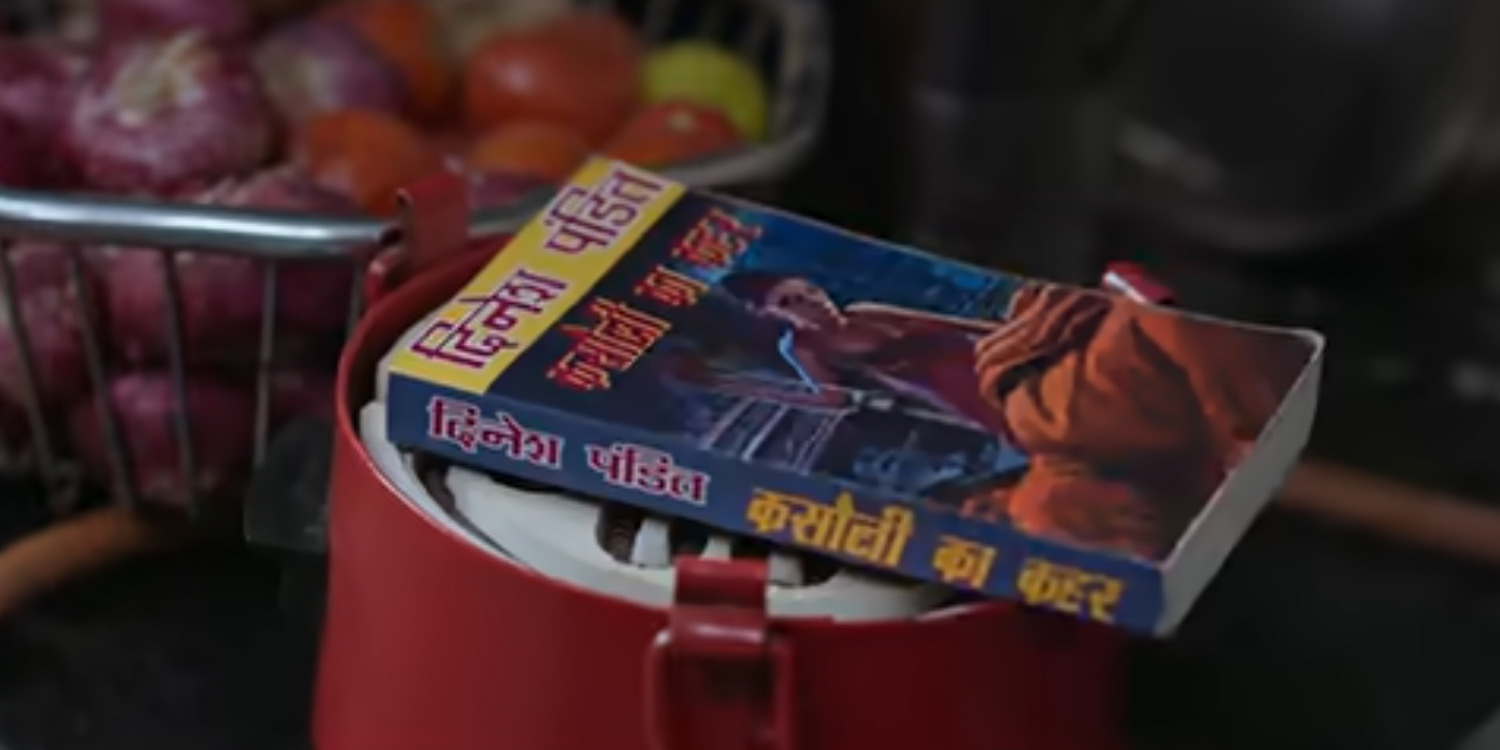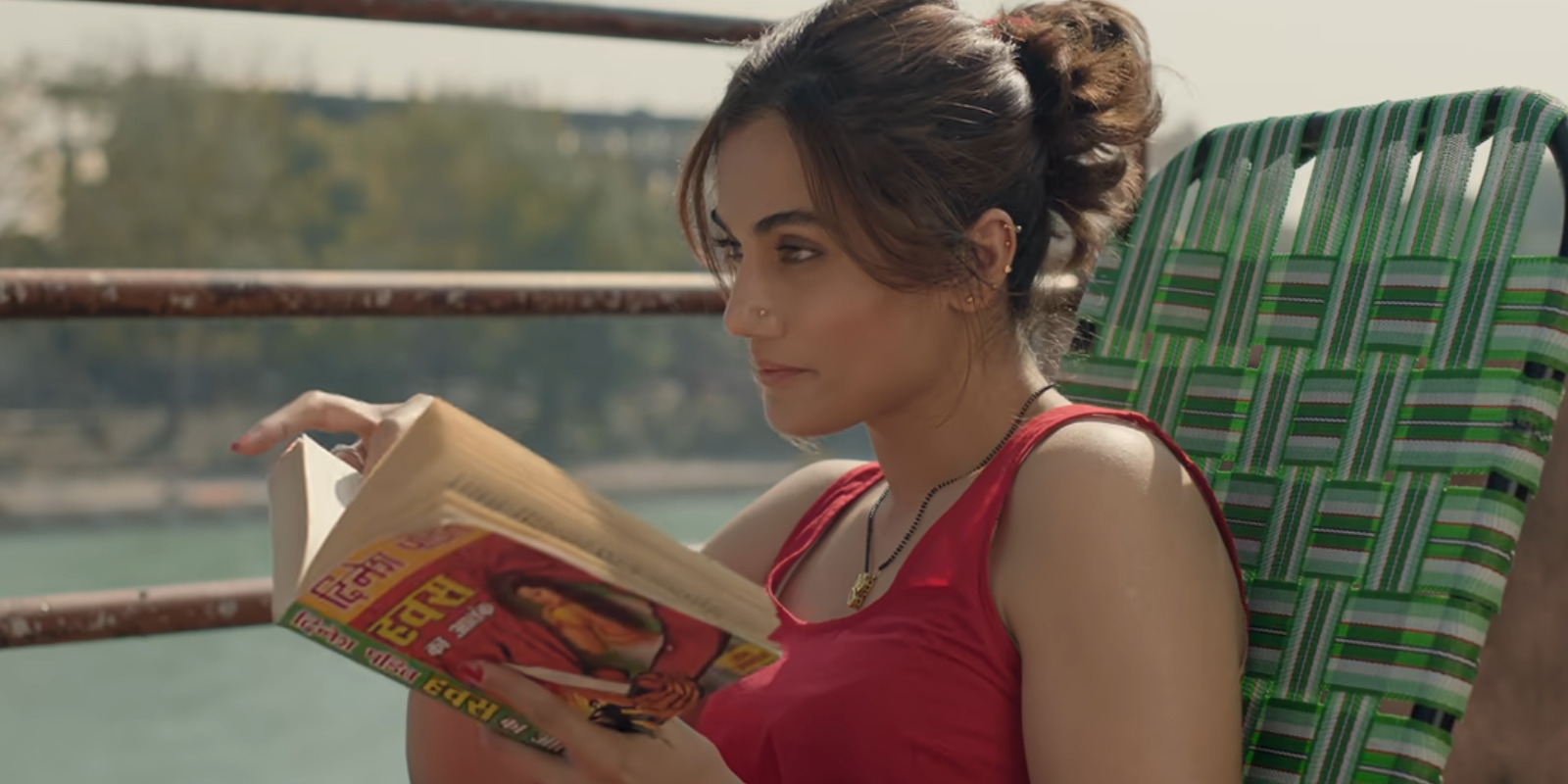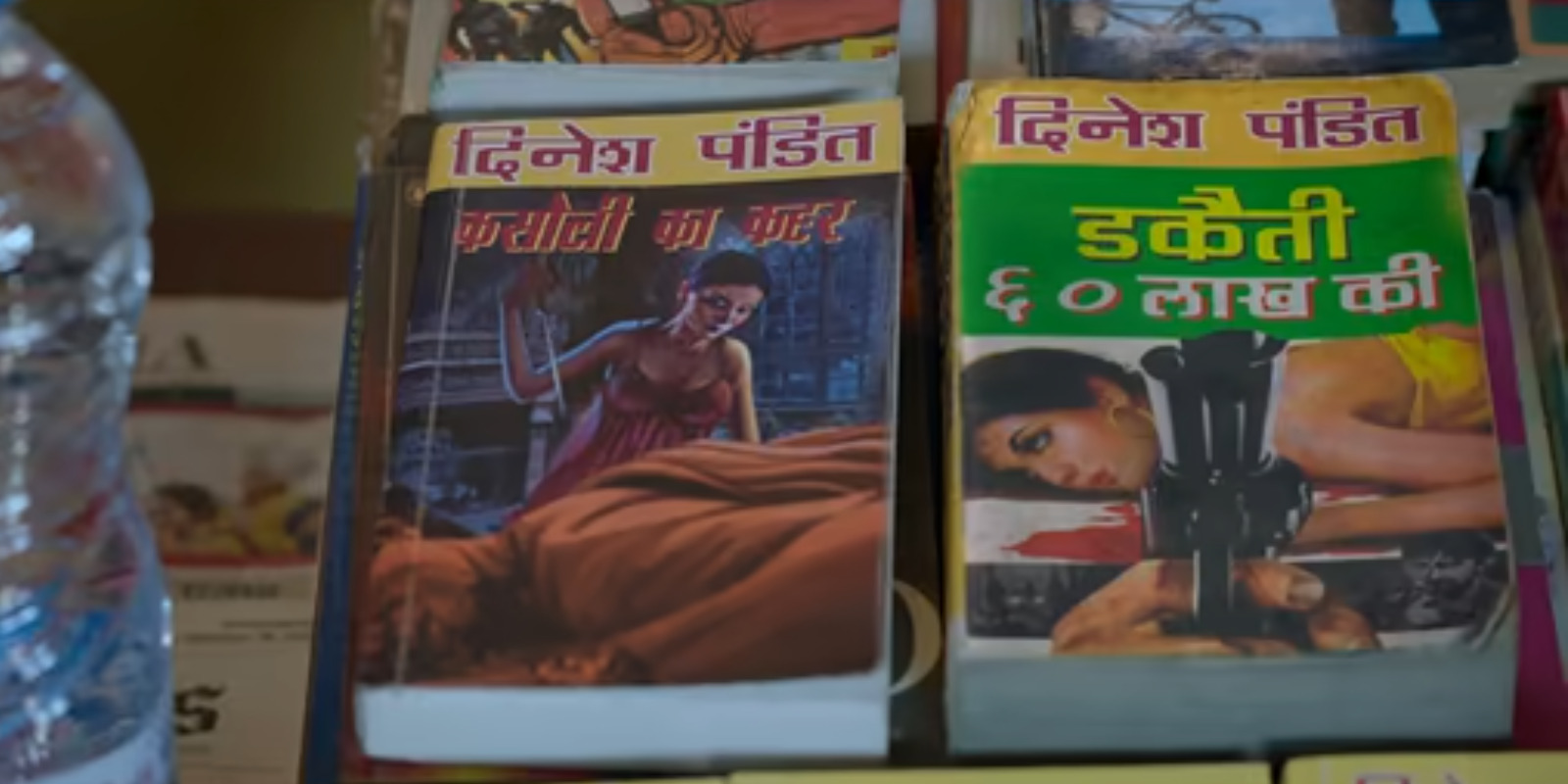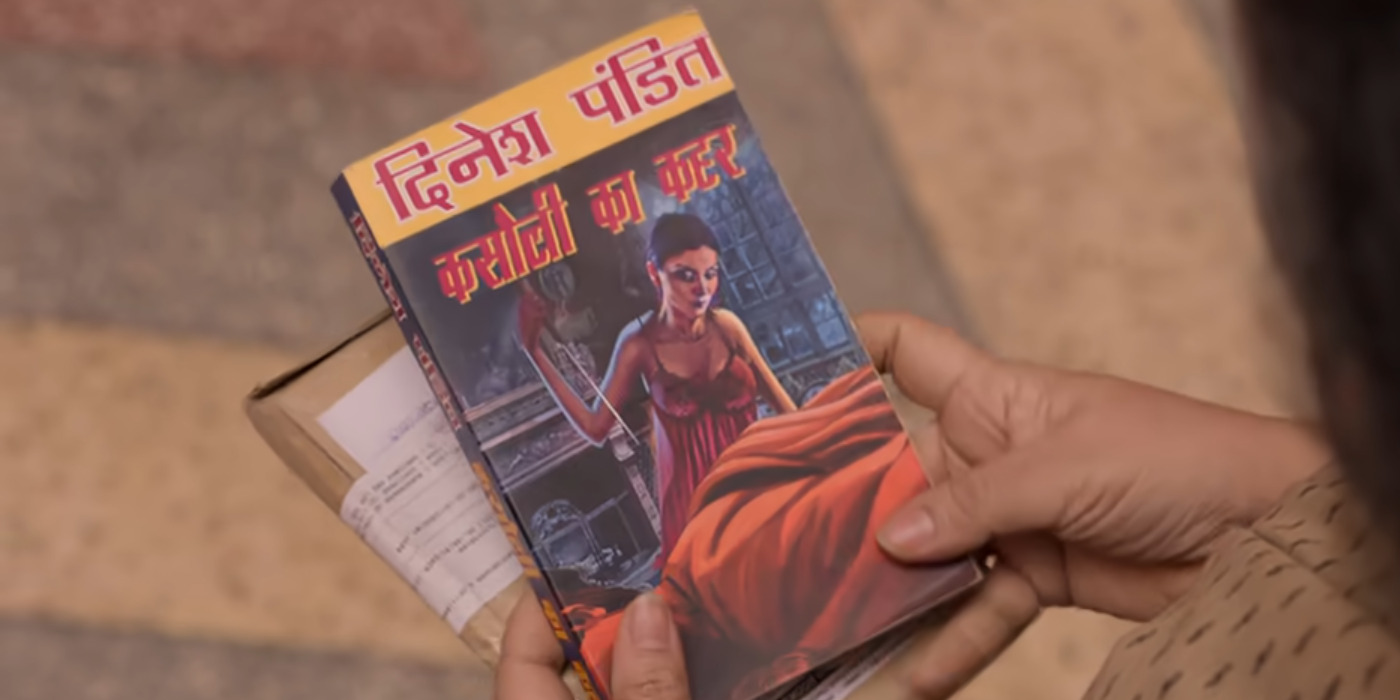In ‘Haseen Dillruba’ and its sequel ‘Phir Aayi Hasseen Dillruba,’ Dinesh Pandit, an author with many pulpy Hindi crime novels to his name, plays a significant role despite never appearing on the screen. The central character, Rani Kashyap, is a massive fan of Pandit’s novels and frequently refers to his poetic quotes about love and life. Consequently, the fixation comes in handy when she finds herself under investigation for her husband’s murder in the small town of Jwalapur.
Likewise, Pandit’s novels and his life lessons become an intrinsic part of Rani’s narrative in the second film as she remains on the run from the law while caught in another dangerously passionate love triangle. Therefore, as several of the author’s titles— particularly Hawas ka Aatang, Cobra ka Intiqam, and Magarmach ka Shikanja— become relevant to her story, fans must feel compelled to wonder about these novels existence in reality. SPOILERS AHEAD!
The Fictionality of Dinesh Pandit’s Crime Novels
Screenwriter Kanika Dhillon penned the screenplays for ‘Haseen Dillruba’ and ‘Phir Aayi Hasseen Dillruba,’ creating the fictional worlds of both movies. Dinesh Pandit, the famed pulpy crime novelist, is the central impetus in the writer’s cinematic world since his novels drive the instrumental actions of several characters and their puzzling crimes. However, while the author remains a fairly popular name in these films, Dinesh Pandit isn’t an actual person but rather another fictitious element of Dhillon’s universe.

Initially, Pandit is a fictional reference to the real-life Hindi pulp fiction writers who were popular in the past—from around the 1960s all the way to the 1990s. Authors like Gulshan Nanda, Ved Prakash Sharma, and Surendra Mohan Pathak remain some of the most notable names within the pulp fiction genre, with hundreds of books in their bibliography. Likewise, these authors sported countless fans who enjoyed their work, which ranged from detective stories to trope-filled romances and crime novels such as the ones Pandit specializes in on-screen.
Therefore, Pandit’s character remains an ode to the genre of Hindi pulp fiction novels that has been pushed to the cultural sidelines with the generational progression. Dhillon acknowledged the same in an interview with OTTplay, where she said, “I did read these Hindi pulp crime books. And that’s where Dinesh Pandit is my homage to this fantastic world of Hindi pulp crime that these writers have written.” Thus, Dinesh Pandit and his novels remain works of fiction confined within the films’ narratives.
Hawas ka Aatang is Utilized to Foreshadow Rani and Neel’s Relationship
Hawas ka Aatang is one of the books prominently featured in ‘Haseen Dillruba’ during the early stages of Rani’s acquaintance with Neel. By this point in the story, the woman’s marriage with her husband, Rishu, has cemented itself as a failed endeavor in the spouses’ lives. After the initial failure of trying to connect with Rani, Rishu starts giving her the cold shoulder and ignoring her at every turn possible. For the same reason, Rani’s boredom paves the way for an instant spark when Neel, Rishu’s cousin, arrives to stay over at his house for a while.

During one of the earlier instances when Rani and Neel run into each other on the house’s balconies, one can spot the former reading Hawas Ka Aatang as the pair dip their toes in dangerous flirtation. The book’s title can be roughly translated into The Terror of Lust, which seems to be an obvious allusion to the risky nature of the sexual attraction forming between Rani and Neel. Considering the consequences that follow once they give into their lust for one another, it’s evident that the Pandit novel featured in their earlier interaction is a foreshadowing tool for the same.
Cobra ka Intiqam and Magarmach ka Shikanja: Narrative Catalysts
Unlike Hawas ka Aatang, Dinesh Pandit’s prominently featured books from ‘Phir Aayi Hasseen Dillruba’ are much more directly involved in the film’s storyline. In the predecessor film, Rani and Rishu use the plot of the book Kasauli ka Kehar to cover up Neel’s murder and evade the law. Similarly, Abhimanyu—a new central addition in the sequel—utilized another one of Pandit’s novels, Cobra ka Intiqam (Revenge of the Cobra), to orchestrate his family’s death when he was in his early 20s. Therefore, the book’s primary role in the story is to establish Abhimanyu’s close similarity to the existing protagonists.

Likewise, the final Pandit book revealed in the film, Magarmach ka Shikanja (Crocodile’s Clutch), becomes the blueprint that Rani, Rishu, and Abhimanyu follow in order to escape Officer Montu’s official investigation. Additionally, the book’s plot—and subsequently, the characters’ narrative—also serves as a reference to the 1988 film, ‘Khoon Bhari Maang,’ which features crocodiles as significant plot devices. Ultimately, both books are as fictitious as Dinesh Pandit and his other work, yet play a much more instrumental role within the film’s storyline.
Read More: Ripley: Is My Atrani a Real Book?


You must be logged in to post a comment.